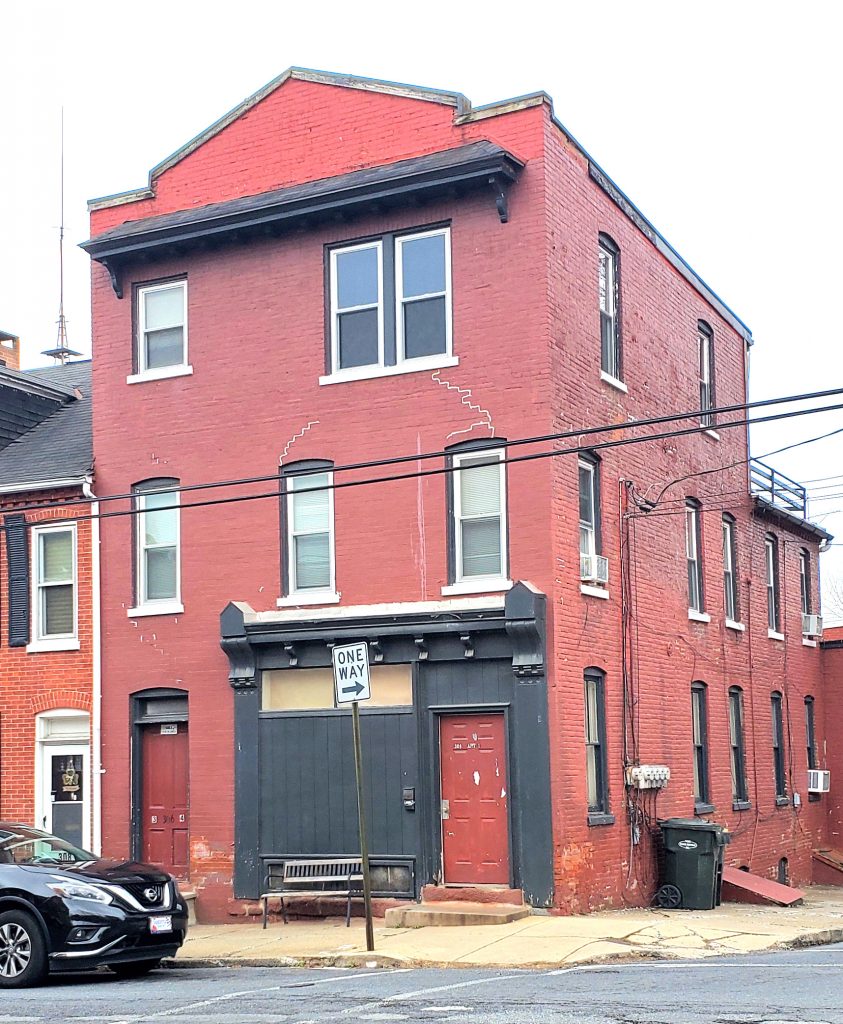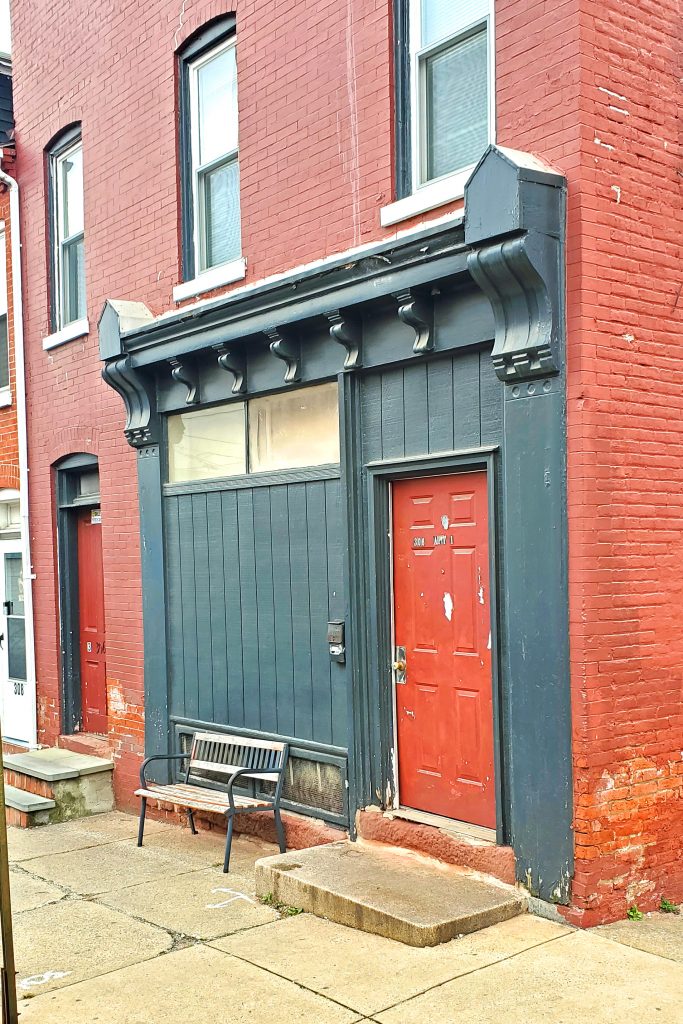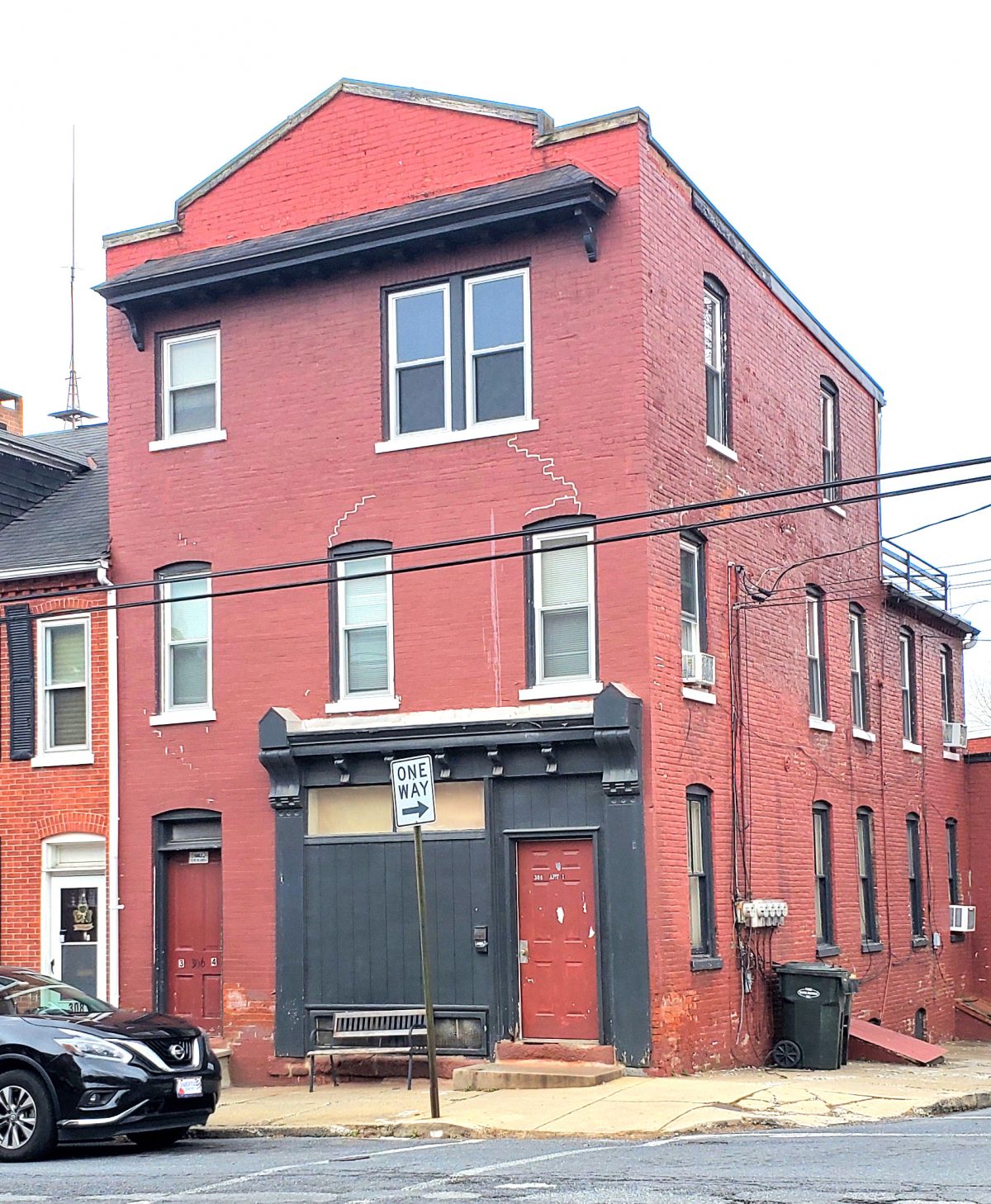This article is part of a series of posts from SoWe Volunteer Historian Jim Gerhart about the stories behind the stores on Old Cabbage Hill

The store at 306 East Filbert, with its slate-gray Victorian storefront, has been standing on its corner for more than 130 years. It has been an apartment for more than seventy-five years, but for its first thirty-three years, it was a bake shop operated by a series of three German-speaking bakers, the first of whom, Ambrose Wirth, was its builder in 1891.
Ambrose Wirth immigrated to America in 1873, and soon he was in Lancaster working as a baker. In 1878, he married Emma Lichty and in 1886, the couple bought the lot at the south corner of East Filbert and Fremont for $510. In 1891, Wirth built a two-story brick house (306) with a first-floor bake shop (304), as well as a backyard bakehouse and an adjoining two-story brick house (308). The Wirths lived in 308 with their seven children while Ambrose ran the bakery in 304 until his death in 1907. (After it closed some fifty years later, the store in 304 was absorbed into 306 and a third story was added to the building.)
After Wirth’s death, his widow Emma and her younger children continued to live in 308. Joseph Kauffman bought 304-306 and ran the bakery, living above the bake shop with his wife Lena and their three children. Kauffman was a German immigrant who arrived in Lancaster in 1888, went back to Germany for several years, and then returned here in 1896. He died in 1912 at the age of forty-two.
Kauffman’s bakery assistant, Jerome Yecker, an Alsatian immigrant, took over the bakery after Kauffman’s death. Yecker soon married Kauffman’s widow, Lena, and the couple ran the bakery until 1924. The store in 304 was then leased to the A&P Tea Company, the first large national grocery chain, until the mid-1930s, with the two upper stories becoming apartments. In the late 1930s, Harold Benn operated a grocery in the store, but about 1940, the store closed and it too was soon converted to an apartment, as it remains today, with its large display window boarded up for privacy.

The original decorative storefront is still nearly intact, with its elaborately capped bracketing pillars, its projecting cornice supported by corbels, and its glass transoms above the display window and door. Should a new business want to reopen the store for the first time in many decades, the Victorian storefront could be restored fairly easily by uncovering the display window and door transom, as well as replacing the modern door with a door more representative of the 1890s. If such were to happen, the spirit of an old German-immigrant baker named Ambrose Wirth would no doubt approve the store’s return to Cabbage Hill’s business community.
Jim Gerhart, March 2023

